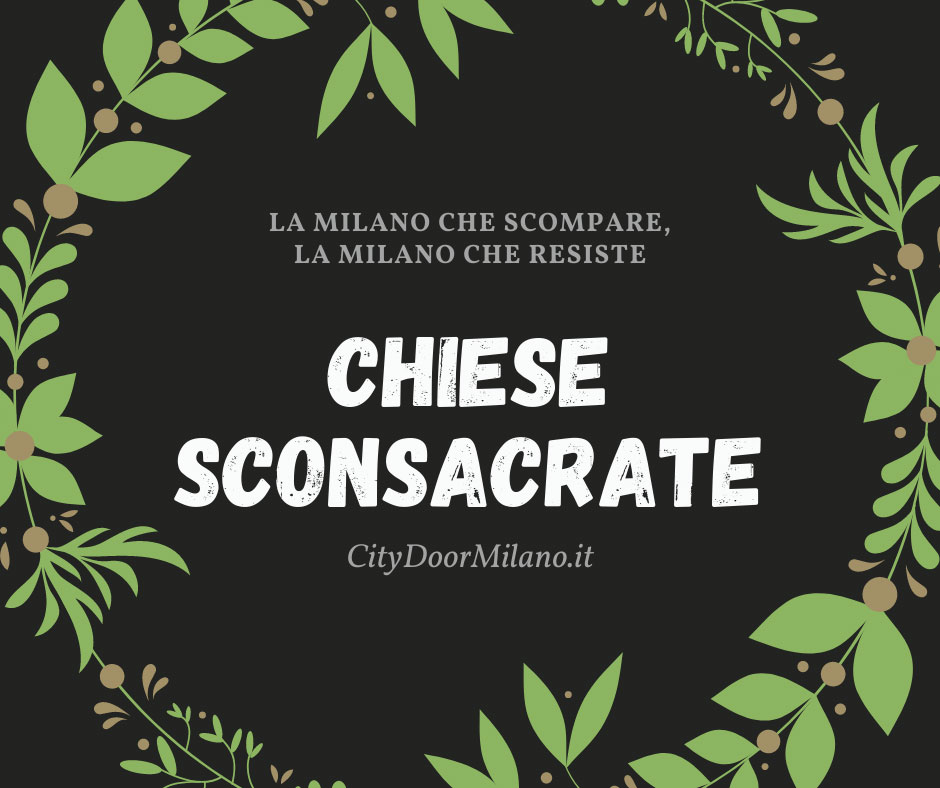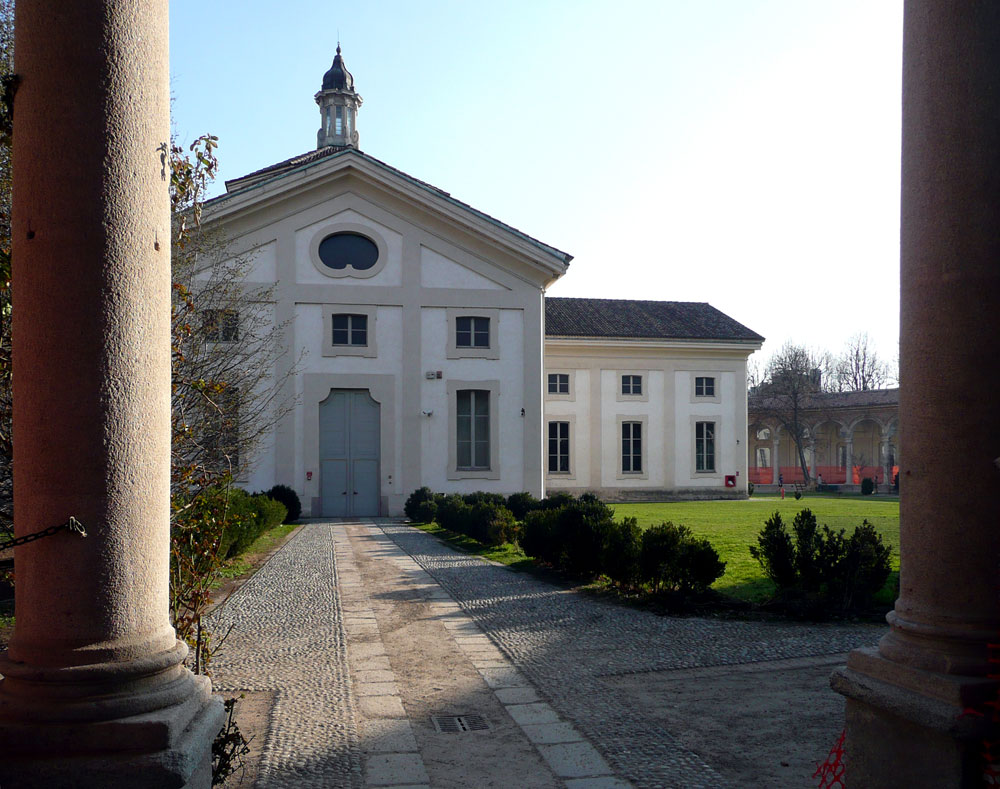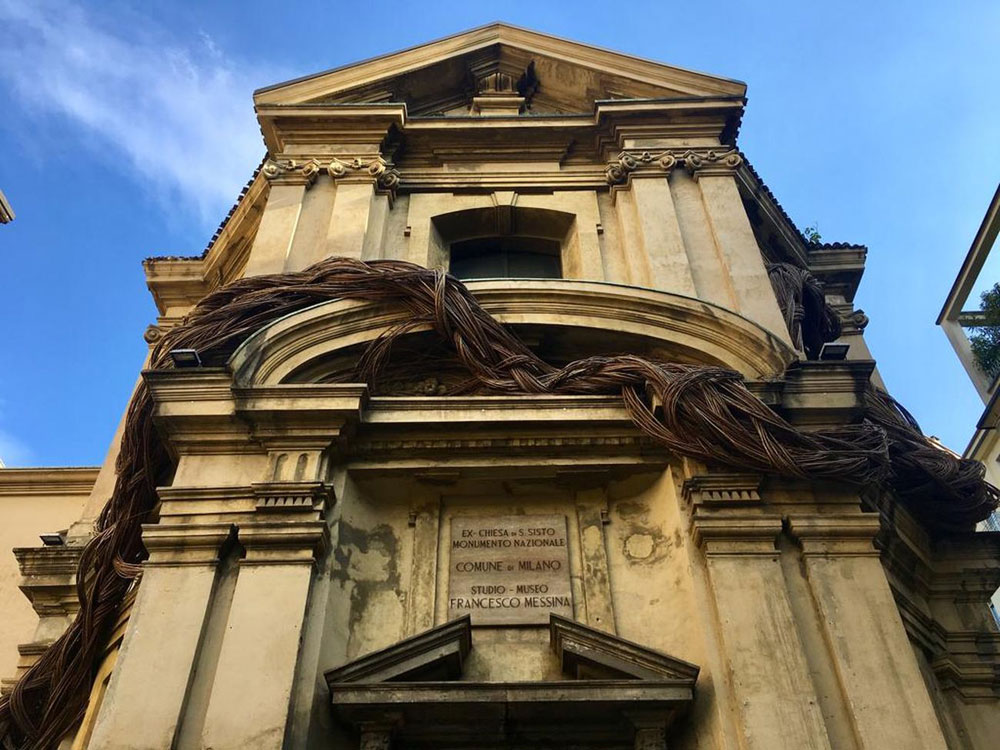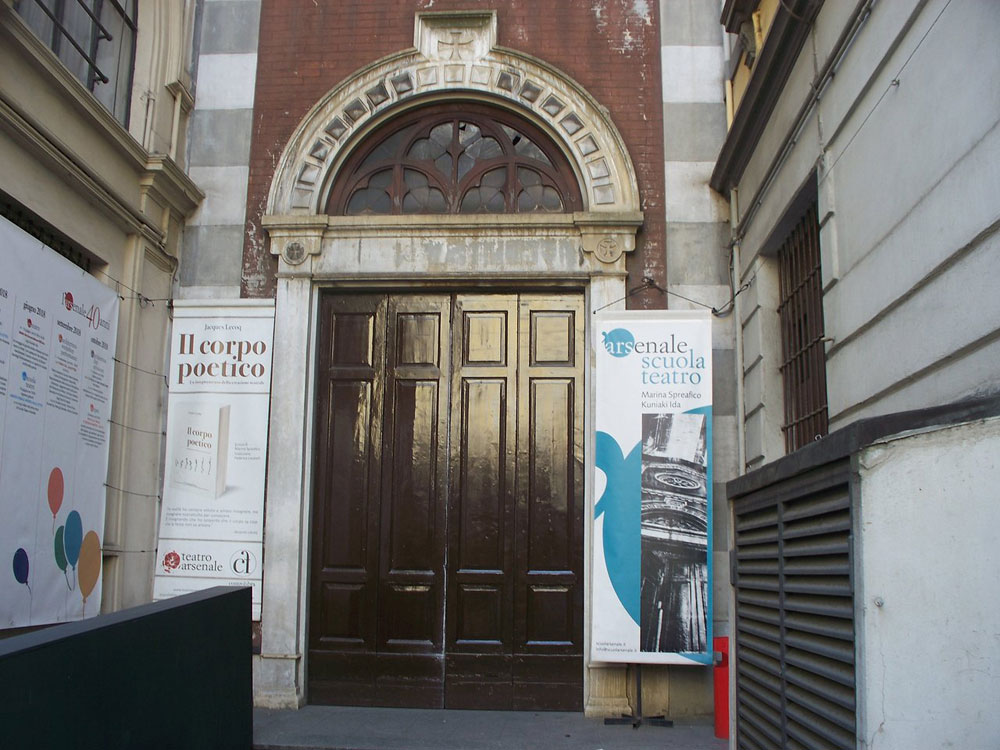Desecrated churches in Milan: a journey through the former Milanese churches
What are the deconsecrated churches in Milan? Today, here on CityDoorMilano.it, we will take you to discover all the deconsecrated religious sites within our city. We have found ten ... good trip to everyone!
QUALI SONO LE CHIESE SCONSACRATE A MILANO?
- La Chiesetta - via Paolo Lomazzo 12
- San Carpoforo - via Marco Formentini 10
- San Giuseppe della Pace - via Piero della Francesca 47
- San Michele ai Nuovi Sepolcri - viale Regina Margherita
- San Paolo Converso - piazza Sant'Eufemia
- San Pietro dei Pellegrini - Corso di Porta Romana 120
- San Sisto al Carrobbio - via San Sisto 6
- Santi Filippo e Donato - via del Molinazzo ang. via Piero Martinetti
- Santi Simone e Giuda - via Cesare Correnti
- Santi Teresa e Giuseppe - via della Moscova 28

LA CHIESETTA
La Chiesetta, a deconsecrated church dating back to the late eighteenth century, is now a famous place in the middle of Chinatown. Do you want to spend an evening in a particular and different location? Then La Chiesetta is for you! It is located in via Lomazzo 12 and since January 2006 it seduces its guests thanks to its gothic style environment, lit by votive candles among frescoes and capitals. And ... between Sangria del Priore, Acqua Santa, Extrema Unczione and Padrenostro you can taste some delicious cocktails with an evocative name.
SAN CARPOFORO
Today the venue for the courses of decoration, restoration and contemporary sacred art of the Brera Academy of Fine Arts, the church of San Carpoforo has a very long history that is lost in the mists of time. If the first historical evidence of its existence is dated to the year 813, tradition tells that the ancient structure of the building belonged to a Roman pagan temple dedicated to the goddess Vesta, then consecrated to San Carpoforo through the mediation of Santa Marcellina, sister of Sant'Ambrogio. If so, the church would have been consecrated between the end of the 4th and the beginning of the 5th century. Following a thousand vicissitudes that occurred over the centuries, San Carpoforo was deconsecrated on 24 December 1787. It is located in via Formentini 10.
SAN GIUSEPPE DELLA PACE - GATTOPARDO CAFE'
In addition to La Chiesetta, the Gattopardo Café is also a place that was opened inside a deconsecrated church. Active since September 14, 2001, it took the place of an early twentieth century church, deconsecrated in the seventies. Il Gattopardo is proposed both as a disco bar and as a location for organizing events and events of all kinds, including gala dinners and buffets. It is located in via Piero della Francesca 47.
SAN MICHELE AI NUOVI SEPOLCRI
Inaugurated in 1719 on a project by architects Francesco Croce and Attilio Arrigoni, the church of San Michele ai Nuovi Sepolcri is now part of the Rotonda della Besana complex. It was conceived as a city cemetery and, after some initial technical problems, the burials began. It is estimated that around 150,000 people have been buried throughout its history. The building was decommissioned in 1792 following the Austrian health legislation, which required the cemeteries to be moved outside the city circle. The Rotonda della Besana complex became municipal property in 1958 and has since been used as a public green space and exhibition space for cultural events, screenings and temporary exhibitions. It also houses the Children's Museum of Milan (MUBA) since 2014. The complex is located in viale Regina Margherita.

SAN PAOLO CONVERSO
The former church of San Paolo Converso is located at the intersection of Corso Italia and Piazza Sant'Eufemia. Born in 1549 as a church of the adjoining convent of the Congregation of the Angelics, it was completed in 1580 and then underwent several changes in the following decades. In 1808 the monastery was evacuated and the church deconsecrated following the Napoleonic convent suppressions. Starting in 1932, when the architect Mezzanotte led the conservative restoration of all the frescoes in the hall, the building was used as a concert hall for sacred music and, from the 1960s, also as a recording room for recordings. In 2016 the architecture studio Locatelli Partners founded Converso, an exhibition space dedicated to contemporary arts.
SAN PIETRO DEI PELLEGRINI
San Pietro dei Pellegrini, currently not accessible, is located in corso di Porta Romana 120, almost at the corner with via dei Pellegrini. Founded before 1344 by the priest Ambrogio Varese, it was deconsecrated in the 19th century.
SAN SISTO AL CARROBBIO
The former church of San Sisto al Carrobbio, built thanks to Federico Borromeo at the beginning of the 17th century, is today the Civic Museum - Studio Francesco Messina. Messina, a famous Sicilian sculptor who moved to Milan, asked at the end of the 1960s the concession of the building on loan for life for use as a studio in exchange for the restoration of the church and the rectory as well as the bequest of the museum - studio to the Municipality of Milan. The council accepted and the works were completed in 1974. Eighty sculptures (mainly in bronze) and twenty-six graphic works on paper are part of the collection donated by Messina to the Municipality. It is located in via San Sisto 4/a.

SANTI FILIPPO E DONATO
The church of Santi Filippo e Donato, also known as the "Chiesetta del Molinazzo", is located on the corner between via del Molinazzo and via Piero Martinetti. Born in the center of a hospital perhaps founded by the Templars, it was probably originally an oratory dedicated to San Giacomo, and later became a church dedicated to Saints Philip and Donato. Visited by Cardinal Federico Borromeo on 4 May 1595, it has fallen into decline over time. On 15 July 1957 the "Pro Molinazzo Committee" managed to save it from the demolition wanted by a construction company which, in the meantime, had acquired a large part of the land in the area. Despite this, the state of decay set out very quickly and the church was targeted over the years by numerous acts of vandalism. Today it serves as a studio and private home.
SANTI SIMONE E GIUDA
The church of Santi Simone e Giuda, located in via Cesare Correnti, was deconsecrated in 1810. Inside was the painting of the "Virgin Mary holding baby Jesus" by Bernardino Luini. Today the Arsenale Theater is located in place of the church. Over the centuries, this building erected in 1272 has also housed another theater, a warehouse, a free church, some anti-fascist libertarian movements, an Evangelical church and the Vietnam Committee.

SANTI GIUSEPPE E TERESA
The church of Santi Giuseppe e Teresa was built at the beginning of the eighteenth century on the ruins of the ancient monastery of the Discalced Carmelites, in the stretch of road between via San Marco and corso di Porta Nuova. In 1809 the complex passed to the Regio Demanio and the state, over the years, would have used it for various uses: tobacco manufacturing, mint, ammunition factory and military housing. Then, in 1900, it was used as a cooperative shop and company after-work, before becoming the headquarters of the Tobacco Factory until World War II. The Municipality of Milan acquired the church and the central part of the complex in 1974, making them the seat of the digital section of the Braidense National Library since 2003.
As you have seen, Milan is full of treasures, often unknown to most of its inhabitants. Not only deconsecrated churches, but also gardens, palaces, buildings ... hide incredible and extremely exciting stories. Hoping to be able to thrill you, we invite you to continue reading by clicking on the section "The Milan that disappears, the Milan that resists", for a new journey into the history of the Milanese city.











